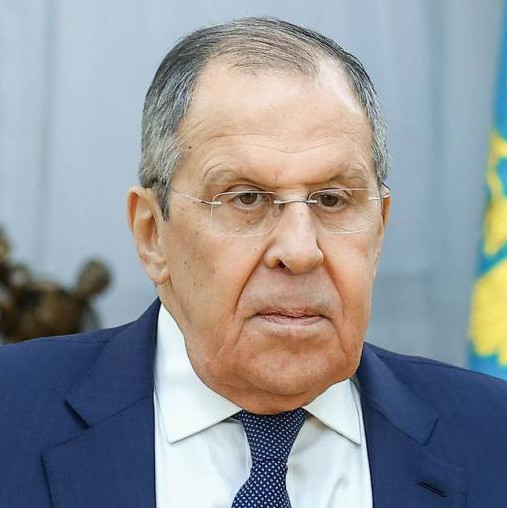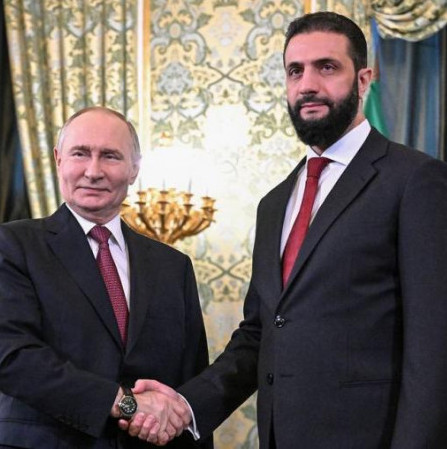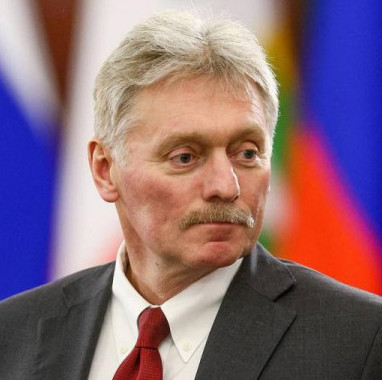The return of Russia to international aerial and maritime patrolling was perceived by the West just as the main evidence of Cold War recurrence. We are accused at least of unjustified pressure on the partners and “guileful” disruption of the antiterrorist front. We are threatened with a reproof already at the April NATO summit in Bucharest. In this case, a reproof with consequences.
Yet in the military sense there is no “guile” in the patrolling itself. We practiced it since the end of the 50-s but suspended in 1992 unilaterally. Formally it was done due to irrevocable disappearance of an idea of “potential enemy” as it was seemed to us that time. Actually it was done due to the well-known economic situation in the country.
Meanwhile, not only the traditional West, but also Japan, China and even India regularly perform at least long-range sea voyages. The US AF patrolling over the transatlantic bridge, Eastern Europe and Mediterranean was even expanded due to the use of the aerial corridors of Russia and Central Asia on the way to Afghanistan. By the way, daily 50-120 NATO aircraft perform various flights. More than 500 warships and auxiliary vessels of the US NAVY only are permanently fulfill various missions overseas.
In our case mastering of high-seas patrolling orders, interaction of branches and services, practicing of tactics and maneuvers, including air refueling and head-out flying, are missions of a local significance yet evidently not of a narrow-departmental one.
However, the quantitative aspect of the patrols is hardly impressive: from late August 2004 14 strategic bombers Tu-95MS fly over the Pacific, Atlantic and Arctic oceans. They do not carry live weapons, this practice was ceased in our AF after WWII. The US AF neither confirm nor deny this practice. But taking into consideration the well-known accidents of the 60-s near Greenland and in Spain the US aircraft do carry live weapons.
We declared officially and in detail that 40 crews, i.e. about 50 per cent of the flying personnel in our bomber command, are trained for high–seas patrolling. The attention paid to the large-scale flights of our long-range aviation that peaked on January 11, is quite understandable. On that day for the first time in the last 15 years almost the entire bomber command fleet was in the air, including bombers Tu-160, Tu-95MS, Tu-22-MZ, air tankers Ilushin-78 and command and control planes Tu-134UBL. In terms of the “average patient temperature in hospital” these machines during the entire preceding period served out 40-50 per cent of their life.
The pilots are surely glad that for the first time in the RF AF history the flying hours of the long-range aircraft in 2007 exceeded 80 (whereas our regulations specify 150 hours and the IS regulations – 200 hours). Almost 30 per cent of young long-range pilots were permitted to operate the aircraft independently. But suspicions that the flights of the Russian aircraft over the Alliance countries were carried out to check their detection systems are just baseless. In this case these systems are not activated in the combat mode, while the stand-by mode is “revealed” just by usual passenger planes.
The more indicative role is of the maritime patrols. All concerned and unconcerned parties are advised in details on these patrols. Likewise the aerial patrols, these patrols provide for military presence of Russia in the areas where we had no time to operate earlier. In December 2007, a Northern Fleet task force headed to the Mediterranean. The task force included aircraft-carrying cruiser (aircraft carrier) “Admiral Kuznetsov” (the largest warship of the Russian Navy), two antisubmarine warships and tanker. In the Mediterranean a group of the Black Fleet ships jointed this task force. The group included guided-missile cruiser “Moskva” and sea tanker. Totally 4 warships, 7 vessels, 47 aircraft and 10 helicopters were involved in the “patrolling-demonstrating operations”. Their final destination is a naval base in Syrian port Tartus. En-route the ships made 11 visits to 6 countries. It also remarkable that the joint task force exercise (end of January) was observed by at least 20 NATO ships.
Now it’s time to speak about political entourage of the aerial and maritime patrols. President V. Putic claimed about the expanded radius of our long-range aviation on August 17, 2007 at the joint exercises of the SCO countries. Thus, in our opinion, we sent our collective message to the NATO security system that is not the same as the international security system. Second, Moscow demonstrated that the Russian armed forces are reinforced without all hands ahoy but successively as the entire resources of the country increase. All hopes for the aforesaid security systems are so encouraging that the “individual protection facilities” are yet preferable. Our postconfrontational partners took care of them earlier and without us. Therefore, thirdly, the demonstration of the Russian flag was an “explanatory” mission rather that combat-training one. We confirm that we became stronger, but quantitative and substantial forms of our military presence cannot threaten anybody if we compare the forces and operations of the sides. Other nations do the same, but we are blamed for revival of the Cold War.
By the way, the expression “to restrain the Cold War” has a double meaning moreover two opposite senses. Say, by snapshooting the Cold War our “patrol” tries to delay it.
Yet in the military sense there is no “guile” in the patrolling itself. We practiced it since the end of the 50-s but suspended in 1992 unilaterally. Formally it was done due to irrevocable disappearance of an idea of “potential enemy” as it was seemed to us that time. Actually it was done due to the well-known economic situation in the country.
Meanwhile, not only the traditional West, but also Japan, China and even India regularly perform at least long-range sea voyages. The US AF patrolling over the transatlantic bridge, Eastern Europe and Mediterranean was even expanded due to the use of the aerial corridors of Russia and Central Asia on the way to Afghanistan. By the way, daily 50-120 NATO aircraft perform various flights. More than 500 warships and auxiliary vessels of the US NAVY only are permanently fulfill various missions overseas.
In our case mastering of high-seas patrolling orders, interaction of branches and services, practicing of tactics and maneuvers, including air refueling and head-out flying, are missions of a local significance yet evidently not of a narrow-departmental one.
However, the quantitative aspect of the patrols is hardly impressive: from late August 2004 14 strategic bombers Tu-95MS fly over the Pacific, Atlantic and Arctic oceans. They do not carry live weapons, this practice was ceased in our AF after WWII. The US AF neither confirm nor deny this practice. But taking into consideration the well-known accidents of the 60-s near Greenland and in Spain the US aircraft do carry live weapons.
We declared officially and in detail that 40 crews, i.e. about 50 per cent of the flying personnel in our bomber command, are trained for high–seas patrolling. The attention paid to the large-scale flights of our long-range aviation that peaked on January 11, is quite understandable. On that day for the first time in the last 15 years almost the entire bomber command fleet was in the air, including bombers Tu-160, Tu-95MS, Tu-22-MZ, air tankers Ilushin-78 and command and control planes Tu-134UBL. In terms of the “average patient temperature in hospital” these machines during the entire preceding period served out 40-50 per cent of their life.
The pilots are surely glad that for the first time in the RF AF history the flying hours of the long-range aircraft in 2007 exceeded 80 (whereas our regulations specify 150 hours and the IS regulations – 200 hours). Almost 30 per cent of young long-range pilots were permitted to operate the aircraft independently. But suspicions that the flights of the Russian aircraft over the Alliance countries were carried out to check their detection systems are just baseless. In this case these systems are not activated in the combat mode, while the stand-by mode is “revealed” just by usual passenger planes.
The more indicative role is of the maritime patrols. All concerned and unconcerned parties are advised in details on these patrols. Likewise the aerial patrols, these patrols provide for military presence of Russia in the areas where we had no time to operate earlier. In December 2007, a Northern Fleet task force headed to the Mediterranean. The task force included aircraft-carrying cruiser (aircraft carrier) “Admiral Kuznetsov” (the largest warship of the Russian Navy), two antisubmarine warships and tanker. In the Mediterranean a group of the Black Fleet ships jointed this task force. The group included guided-missile cruiser “Moskva” and sea tanker. Totally 4 warships, 7 vessels, 47 aircraft and 10 helicopters were involved in the “patrolling-demonstrating operations”. Their final destination is a naval base in Syrian port Tartus. En-route the ships made 11 visits to 6 countries. It also remarkable that the joint task force exercise (end of January) was observed by at least 20 NATO ships.
Now it’s time to speak about political entourage of the aerial and maritime patrols. President V. Putic claimed about the expanded radius of our long-range aviation on August 17, 2007 at the joint exercises of the SCO countries. Thus, in our opinion, we sent our collective message to the NATO security system that is not the same as the international security system. Second, Moscow demonstrated that the Russian armed forces are reinforced without all hands ahoy but successively as the entire resources of the country increase. All hopes for the aforesaid security systems are so encouraging that the “individual protection facilities” are yet preferable. Our postconfrontational partners took care of them earlier and without us. Therefore, thirdly, the demonstration of the Russian flag was an “explanatory” mission rather that combat-training one. We confirm that we became stronger, but quantitative and substantial forms of our military presence cannot threaten anybody if we compare the forces and operations of the sides. Other nations do the same, but we are blamed for revival of the Cold War.
By the way, the expression “to restrain the Cold War” has a double meaning moreover two opposite senses. Say, by snapshooting the Cold War our “patrol” tries to delay it.



